
Are you struggling to increase your website’s organic traffic and conversions?
Then, it’s more likely that you didn’t build effective SEO funnels for your website and products and/or services.
By implementing an effective SEO funnel strategy, you can not only drive more traffic to your website but also guide potential customers through a personalized journey to get more leads or sales.
In this blog post, we will dive into the fundamentals of SEO funnels and show you how to create one that drives results for your business.
What are SEO Funnels?
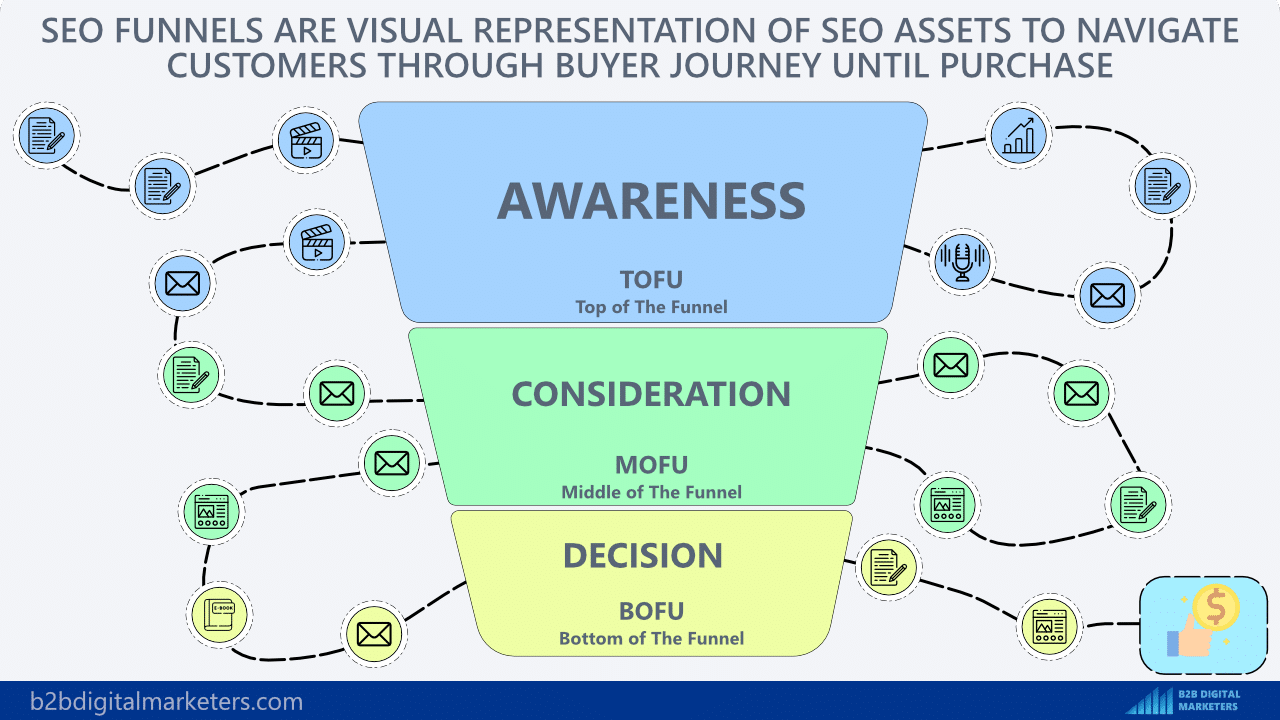
The marketing SEO funnels help marketers create visual representations of website visitors’ steps from first learning about solutions and your brand until they convert on your website. It helps you describe the potential customer’s journey and create and map your SEO marketing asset to create web pages for all stages of the marketing funnel.
Why Are SEO Funnels Important?
SEO Funnels are important because they help you create the right SEO marketing assets on your web page to maximize your SEO and overall marketing results.
Without understanding and planning how you will convert your website visitors, you cannot create an effective SEO strategy that ultimately brings you more sales or leads.
It provides you with important information about what SEO keywords you should target on your website in order to create SEO funnels for all your products and/or services.
With that, here are the three biggest reasons why SEO funnels are important:
Reason #1: Improve Ranking
The first reason why SEO funnels are important for your business is that they help you to improve your ranking.
Many website owners and business owners think that the best way to do SEO lead generation is by creating an only product or service pages.
However, in today’s competitive search results, for you to rank, you need to create SEO content across all stages of the marketing funnel such as for the TOFU, MOFU, and BOFU to create trust with search engines so ultimately you can rank for your profitable keywords.

Because, in most industries, it’s almost impossible to rank in search for keywords that bring you sales or leads without having the support of all the necessary content across all stages of the marketing funnel, especially the content on the TOFU stage.
So, if you are wondering why you are not ranking in search with your product pages, is because you have created poor SEO funnels for your website and products and services.
Reason #2: Improve Overall Marketing Results
The second reason why SEO funnels are important is that they help you improve your overall marketing results.
Making sure you are focusing on all stages of the marketing funnel is important for your business because it ensures a comprehensive approach to customer acquisition and retention.
Each stage of the marketing and SEO funnel represents a different step in the customer journey and brings different benefits for your brand and neglecting any one stage can lead to lost opportunities and decreased conversions. Here are the benefits of each stage of the marketing funnel:
- Awareness/TOFU: The top of the funnel (TOFU) is where potential customers first become aware of your brand and products/services. This is when you start building trust with your potential customers by providing helpful content and educating them on potential solutions to their problems. At this stage, you can reach the widest audience with the potential becoming your customers in the future. By targeting the TOFU stage, you can improve your overall conversion rates in later stages.
- Consideration/MOFU: The middle of the funnel (MOFU) is where potential customers are considering your brand and products/services, and are interested in learning more. This is when you can introduce your products and services, provide gated content to create lead nurturing, and start with lead qualification. This is when your prospects want to learn more about your potential solutions.
- Decision/BOFU: The bottom of the funnel (BOFU) is where potential customers are ready to make a purchase decision. This is when potential customers start visiting your product/service pages to make a purchase or take an action. If you have done all the previous steps right, it will reflect on your conversions.
As you can see, having the full customer journey covered, will directly influence your ability to generate sales or leads for your business and improve your overall marketing results, especially if you are running PPC because SEO funnels directly influence your conversions across all channels regardless of you are in B2B or B2C.
Reason #3: Increase Conversions
And the last reason why SEO funnels are important is that it helps you to improve your conversions.
According to the latest SEO conversion statistics, the average SEO conversion rate across all industries is 2.4%, and to achieve this or even better results, you need to target keywords and have assets and content across all stages of the SEO funnel.
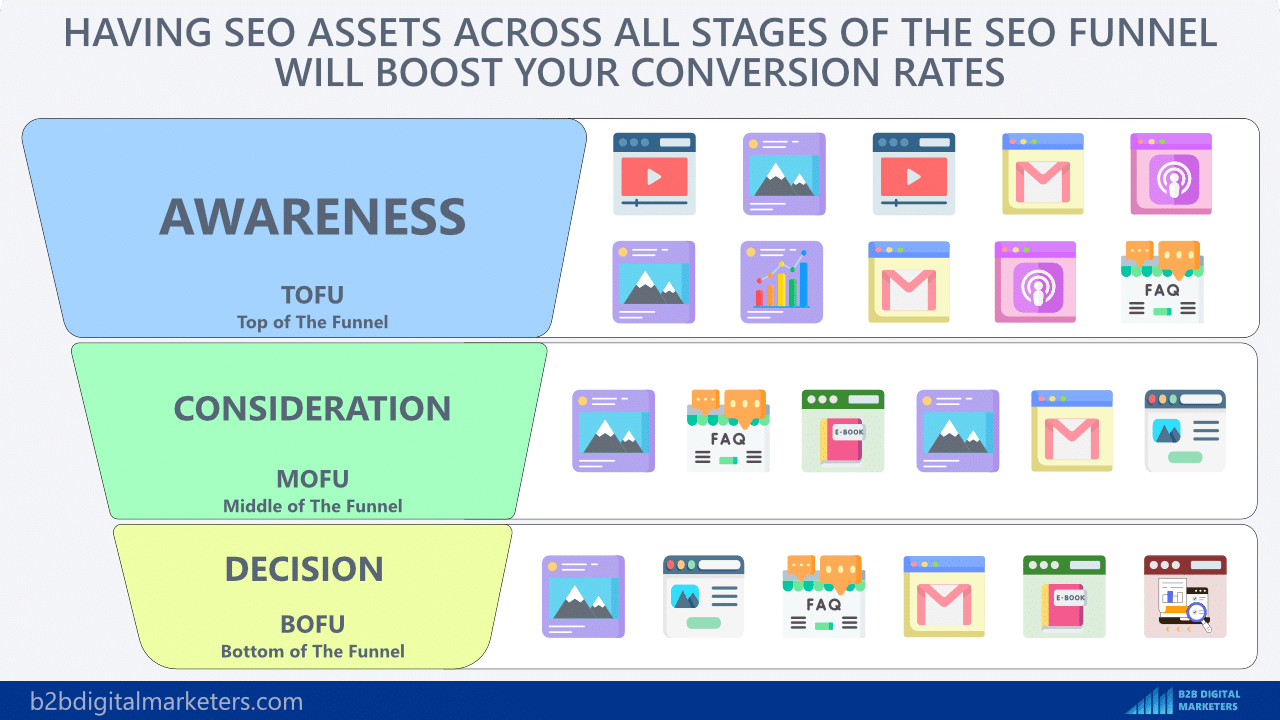
It is important to understand that your potential customers do not make a purchase on their first visit to your website.
You need to lead them throughout the buyer journey so they can get familiar with your brand and ultimately build trust with your brand.
Because trust is what sells for both B2C and B2B Target Audiences.
And without getting your potential customers to visit your website before they reach the BOFU stage, it’s very hard to have at least a decent conversion rate on your website.
Because only a very few people will take the action without knowing or trusting your brand from past interactions.
Therefore, by having a complete SEO funnel, you will able to build trust with your target audience, build a relationship with them, establish yourself as an expert in the industry, educate them, and lead them towards your products or services which ultimately improves your conversion rates.
Your conversion rates are directly influenced by past interactions with your potential customers.
Thus, the least options for touchpoints and interactions you have for your potential customers on your website, generally the smaller conversion rate you will achieve.
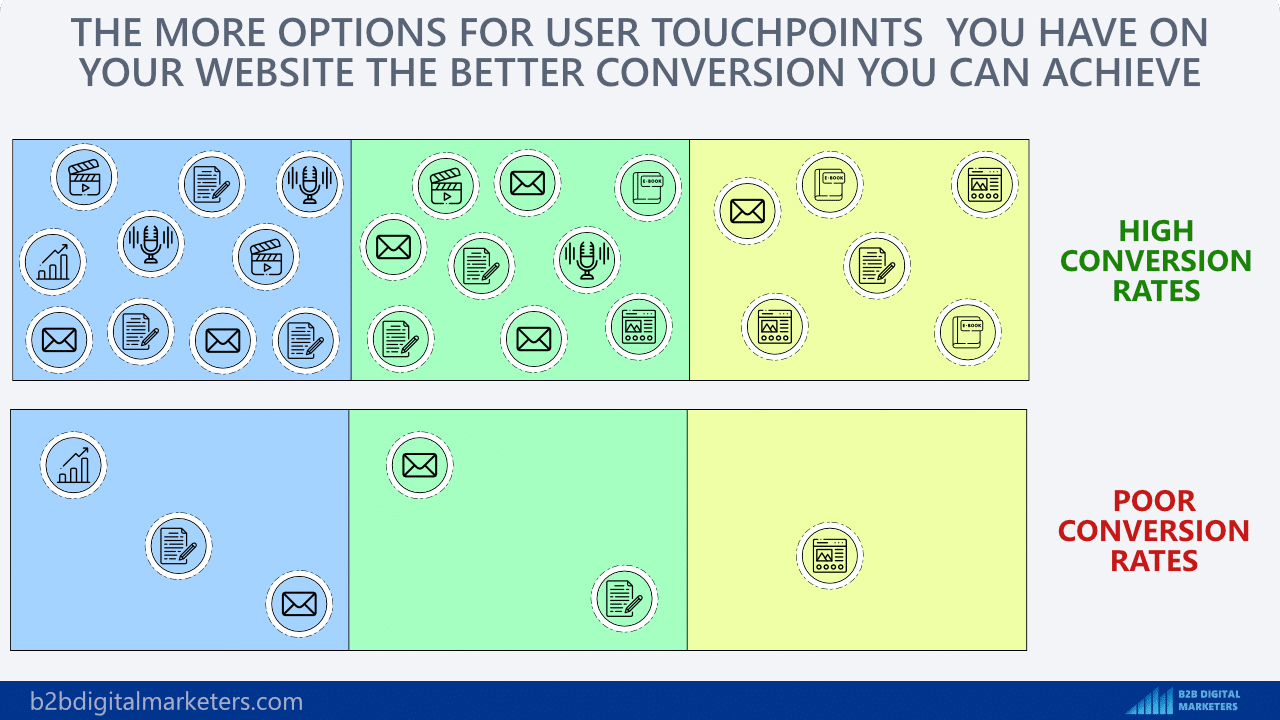
Therefore, it’s important to build complete SEO funnels for your products/services in order to increase your conversions and with that bring more sales, leads, B2B sales leads, and higher ROI from your SEO efforts.
How to Create SEO Funnels
There is a process of creating effective SEO funnels that will help you drive more leads or sales from search engines consistently day and night, almost like on autopilot.
And here are 6 steps to create effective SEO funnels for your website that will drive you leads or sales for your business:
Step #1: Keyword Research
The first step to creating SEO funnels for your website is to start with keyword research.
However, what’s important about keyword research and SEO funnels, is that you have to do keyword research for your products or services.
Especially if you are having different products or services across different product categories such as project management systems and accounting systems or coffee and tea.
As with this, you will need to create different SEO funnels for each of your product/service categories in order to create a complete buyer journey.
To do that, you will need to create topic clusters related to your products or services and find the related primary keywords to your products or services.

For example, let’s I am offering Content Marketing Services.
So, to create an SEO funnel for this I need to create a topic cluster related to “content marketing” as that’s the main category and seed keyword.
To do that, I can take the seed keyword and pop it into Keyword Research tools such as SE Ranking, select my target location, click on analyze and then go to the Keyword Suggestion report.

And here I will handpick all the related primary keywords related to my service such as “content marketing strategy”, “content marketing plan”, “content marketing services”, “content marketing examples”, “types of content marketing”, “content marketing agency”, “content marketing blogs”, “content marketing consultant”, etc. I think you got the idea.
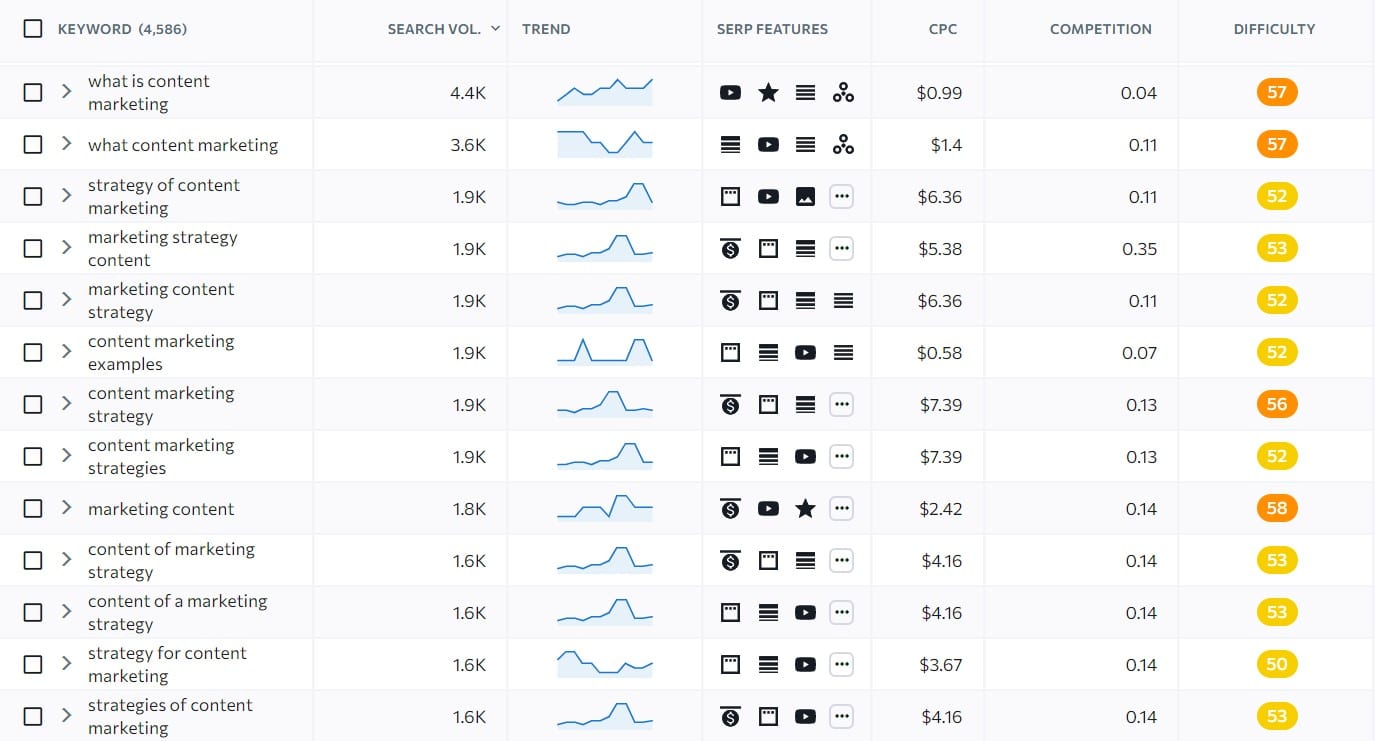
And like this, I will create a topic cluster related to my service.

Of course, you don’t want to only stick to exactly your topic cluster, but you will want to expand it with related terms and entities and create topic clusters from them as well as cover everything that comes under your products or services.
For example, under content marketing, there are other topic clusters you could create such as “email marketing”, “social media marketing”, “blogging”, “inbound marketing”, brand awareness”, as well as related terms and entities such as “personas, “buyer journey”, “landing pages”, “call to action”, “retention”, “bounce rate”, etc.
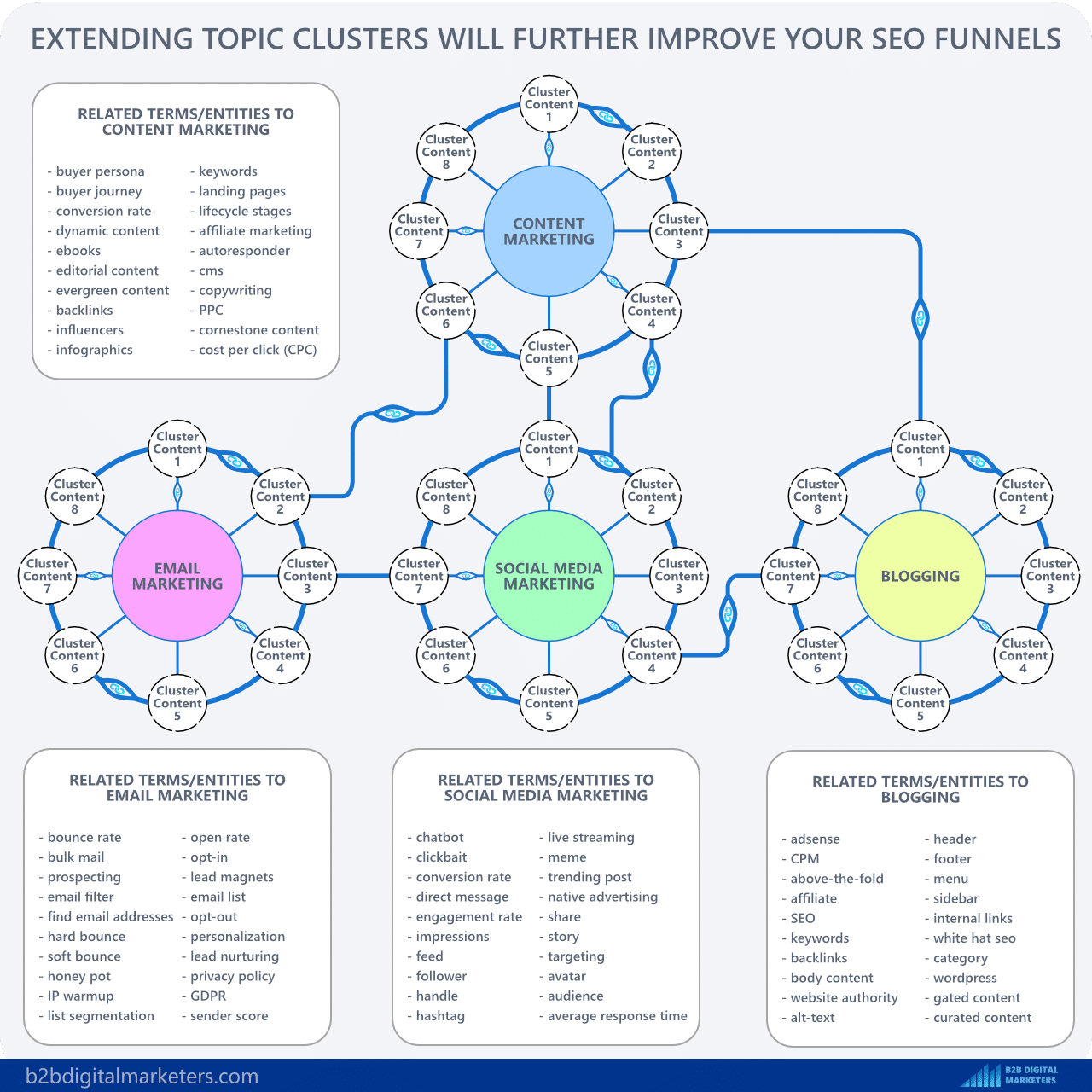
Your goal is to find as many related SEO keywords as possible to your topic clusters and extend that beyond just your topic cluster.
I recommend you read my article on SEO Keyword Mapping as there I am explaining more about how to extend your topic clusters to niche and industry clusters. Also, if you are in B2B then check out my B2B keyword research tutorial.
Step #2: Search Intent & SEO Funnels
The second step is to understand the search intent and keywords you have found in order to figure out where the keywords belong in the SEO marketing funnel.
Search intent means the reason behind the searcher query and by identifying search intent to your keywords, you will be able to map your keywords to your SEO funnel to figure out whether you are having related keywords across all stages of the marketing funnel.
So, first of all, you must know that there are four different types of search intent:
- Informational keywords: These keywords are used by users to gather knowledge, information, or understanding about a specific topic or subject. They are typically used when users are seeking answers to specific questions or looking for general information.
- Commercial keywords: These keywords indicate that the user is in the research phase of the buying process and is looking for information about a product or service before making a purchase.
- Transactional keywords: These keywords suggest that the user is ready to make a purchase and is looking for a specific product or service to buy. They are often associated with more specific, action-oriented keywords such as “buy” or “discount.”
- Navigational keywords: These keywords are used by users who are looking for a specific website or page. They are often used to find a specific brand, product, or service.
And each search intent is aligned with the TOFU, MOFU, and BOFU stages of the marketing funnel, which means ensuring you are having all types of search intent keywords in your keyword list will help you create SEO funnels.

However, the key is to make sure, you are having all search intent keywords within each of your topic clusters and their related terms/keywords/entities to ensure you are having a functional SEO funnel.
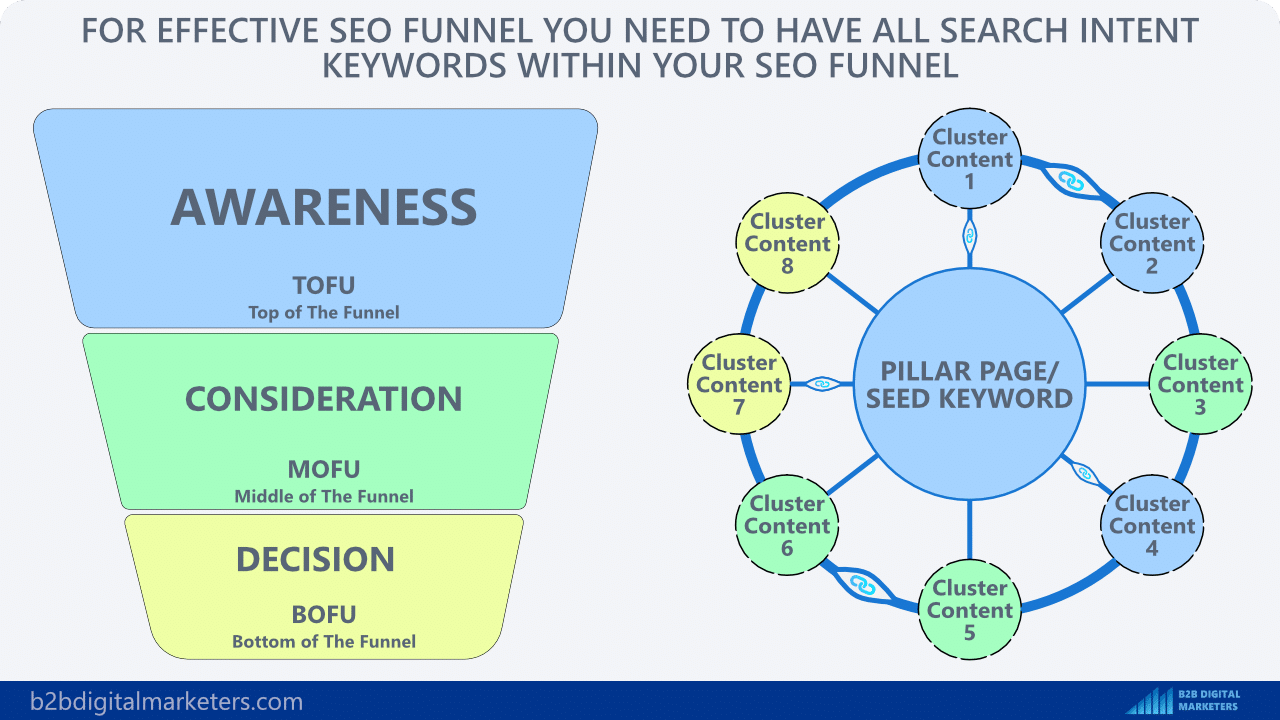
Because having all search intent keywords across various topic clusters is not enough to create a successful SEO funnel.
To guide people interested in a specific topic toward a purchase, all related search intent keywords must be covered within one defined SEO topic cluster to create an effective SEO funnel.
Scattering keywords across multiple topics will not provide a smooth buyer journey or a complete SEO funnel.
Note: Navigational keywords can appear at various stages of the buyer journey. There can be informational navigational keywords such as “what is QuickBooks accounting”, commercial navigational keywords such as “best QuickBooks systems”, or transactional navigational keywords such as “QuickBooks pricing in france”.
To determine the type of navigational keyword, it’s important to identify its search intent, just like with any other keyword.
Step #3: Mapping Search Intent to Keywords
Now that you understand how search intent and SEO funnels are related, we must map the search intent to your keywords.
To do that, we will analyze the SERPs for each keyword and specifically be looking at the keyword modifiers, URL, the type of pages, and the SERP features.
Here is my infographic that helps you analyze the search intent to keywords.
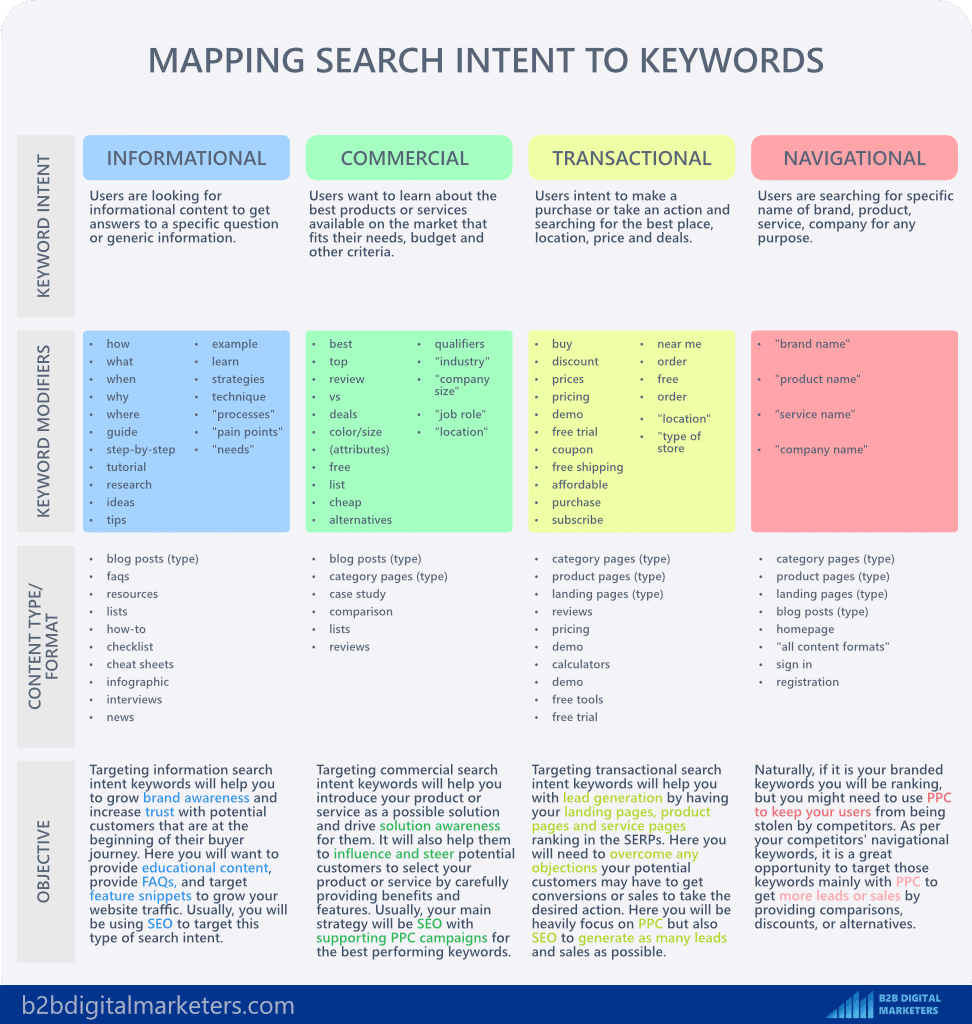
With that, I will be using SE Ranking Keyword Research tools to analyze the SERPs for specific keywords as it allows me to remove personalization, and select my target country, plus it’s better to know how to analyze search intent within keyword research tools to speed up the work.
And here are 3 examples of keywords from my previous topic cluster “content marketing” to analyze search intent:
Keyword Example #1: “content marketing strategy”.
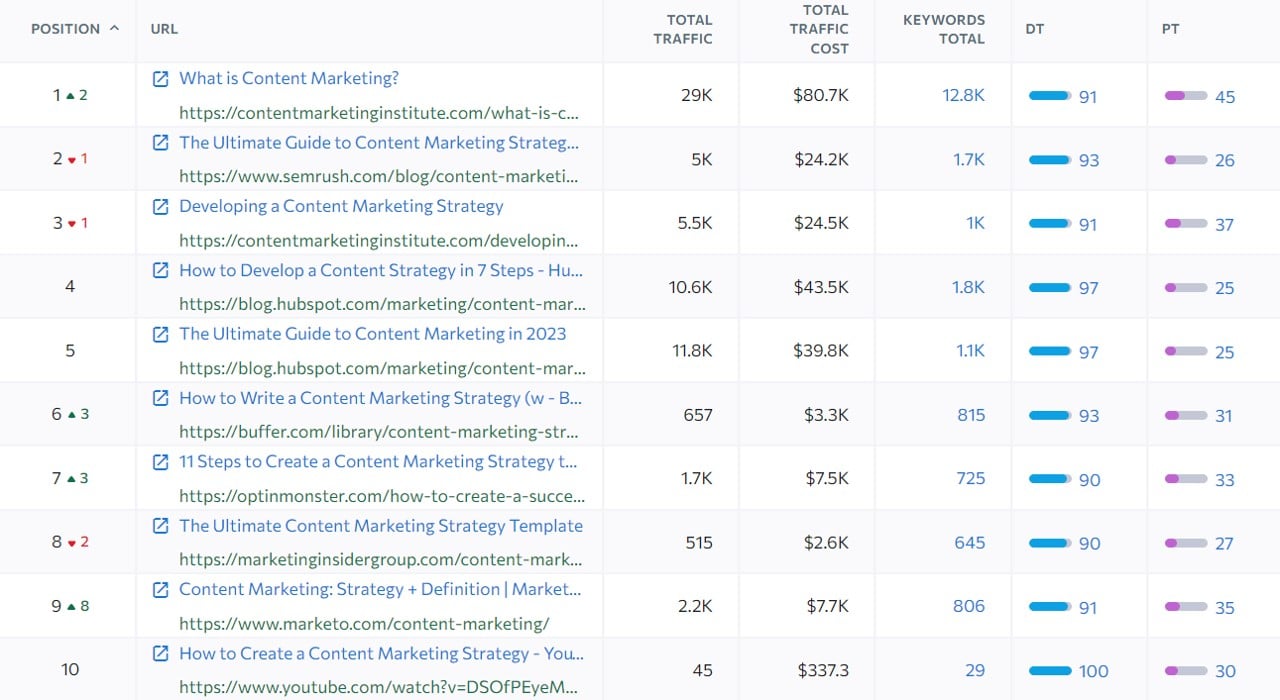
Based on this example, I can clearly see that this is an informational keyword because you can see the keyword modifiers such as what, how, and ultimate guide, as well as a step-by-step process. This shows that the types of content are purely informational without any intent to promote products or services.
Of course, I can visit the pages just to make sure, they are informational in nature, but just from the SERPs, it’s pretty obvious these are informational content formats.
Keyword Example #2: “content marketing agency”.
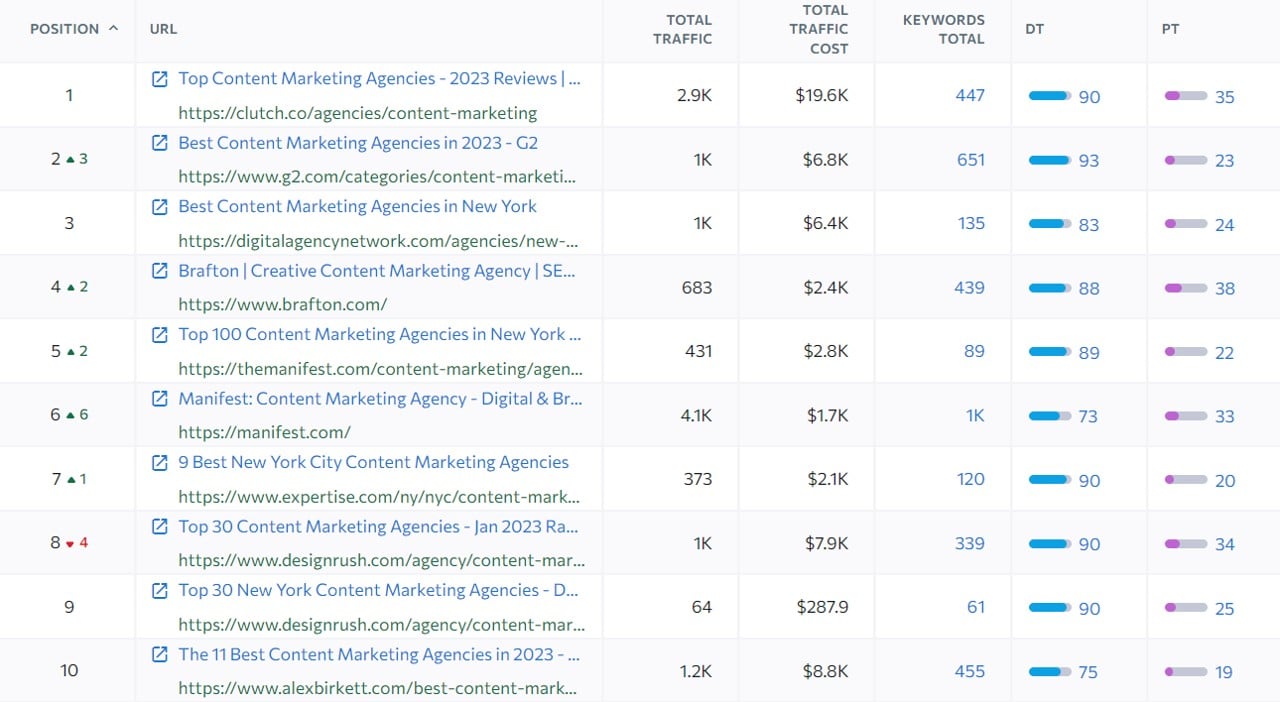
Based on the SERPs I can see that this is mainly a commercial keyword with a hint of the transactional keyword. Within the SERPs you can see, there are a lot of keyword modifiers “best” and the type of content is listicle blog posts recommending the best agencies (or their services), which makes this keyword commercial.
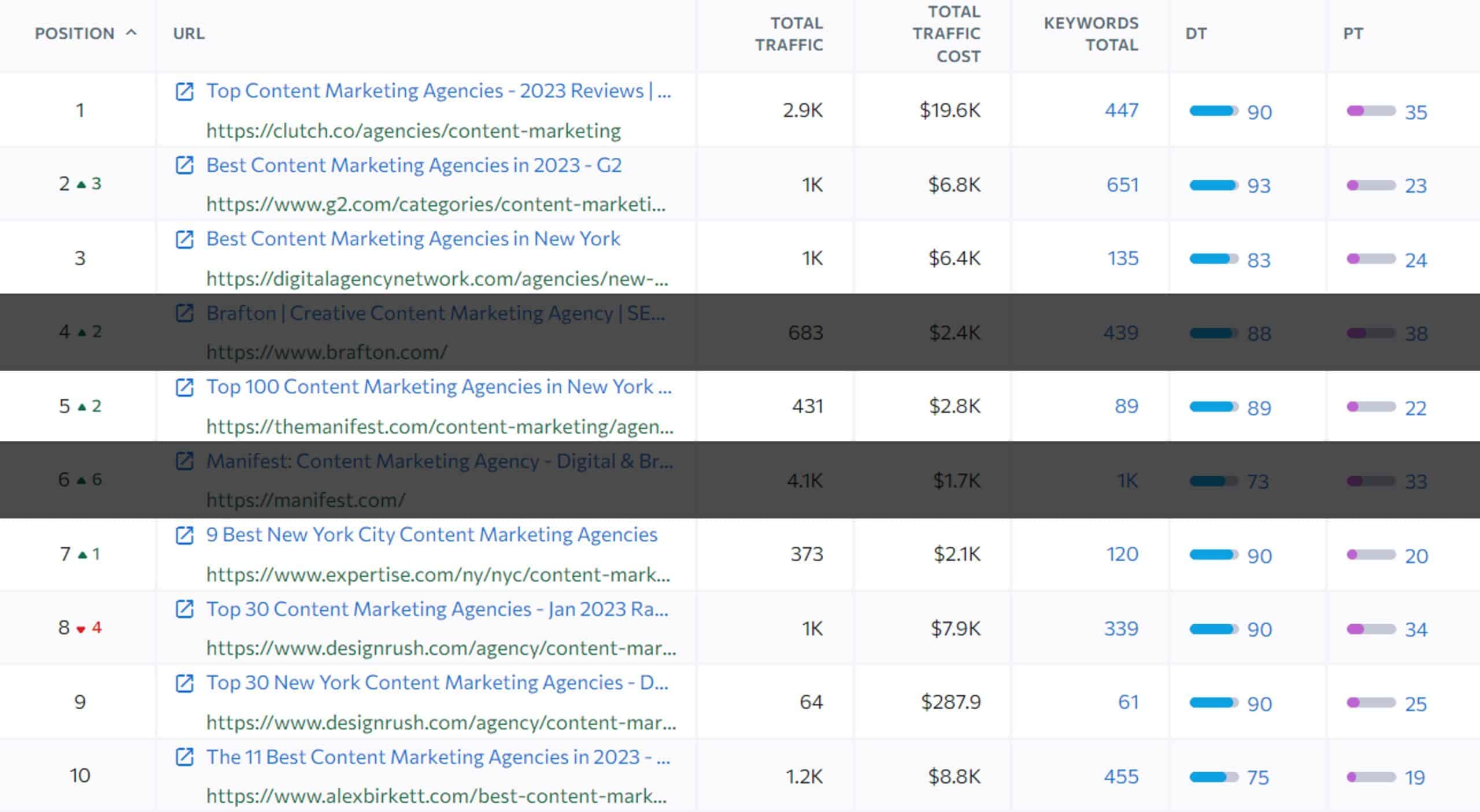
And then I can also see two search results of homepages which in this example are considered pages for products or services and indicate a transactional search intention.

Example Keyword #3: “content marketing consultant”.
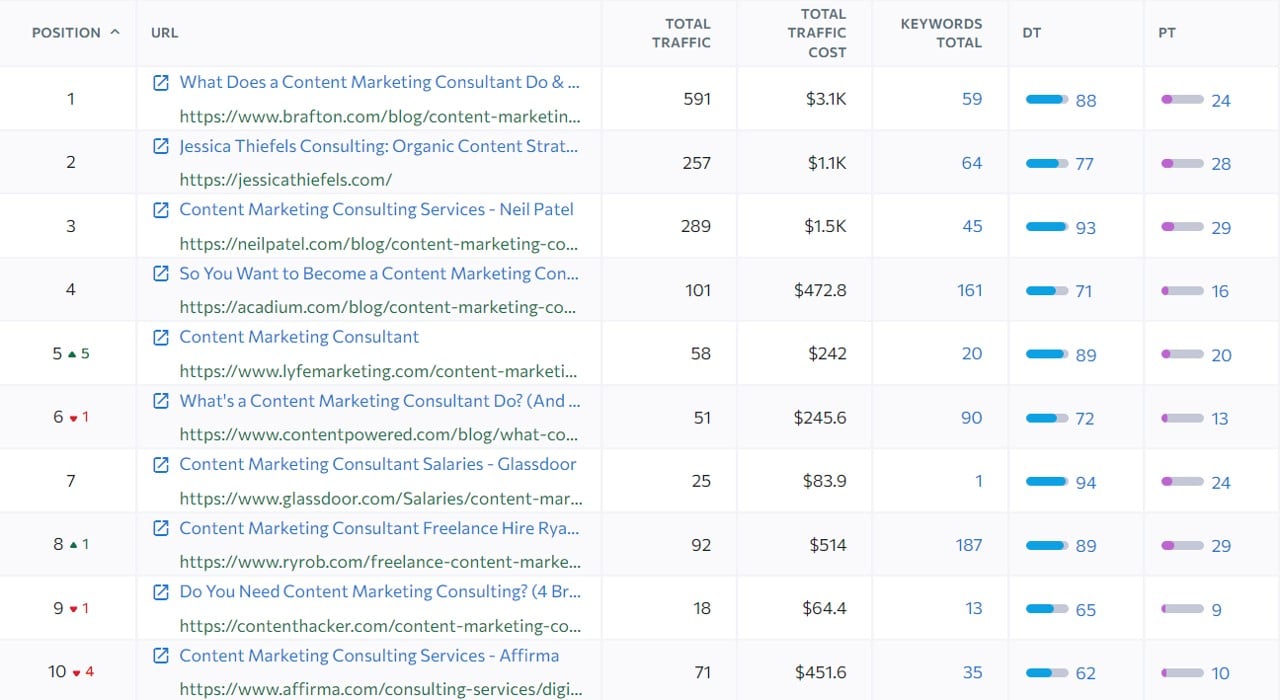
Based on the SERPs for this keyword, I can see that this keyword is a Transactional and Informational keyword. First, I can see that there are ranking results for homepages and service pages, which indicates transactional search intent.
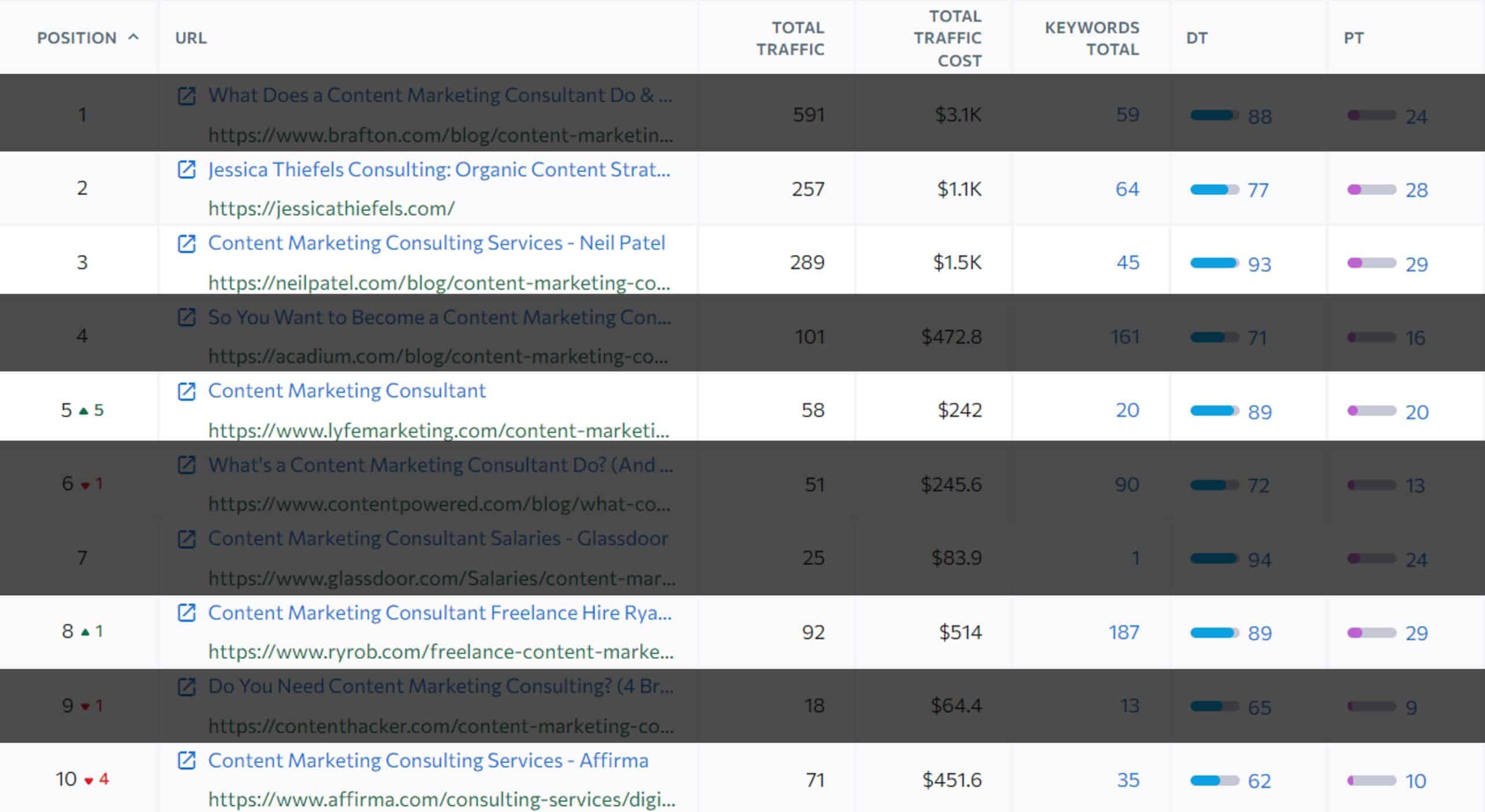
And then the rest are blog posts, with keyword modifiers “what”, focusing on a specific question to provide answers, or showing salaries that indicate the content is informational in nature.
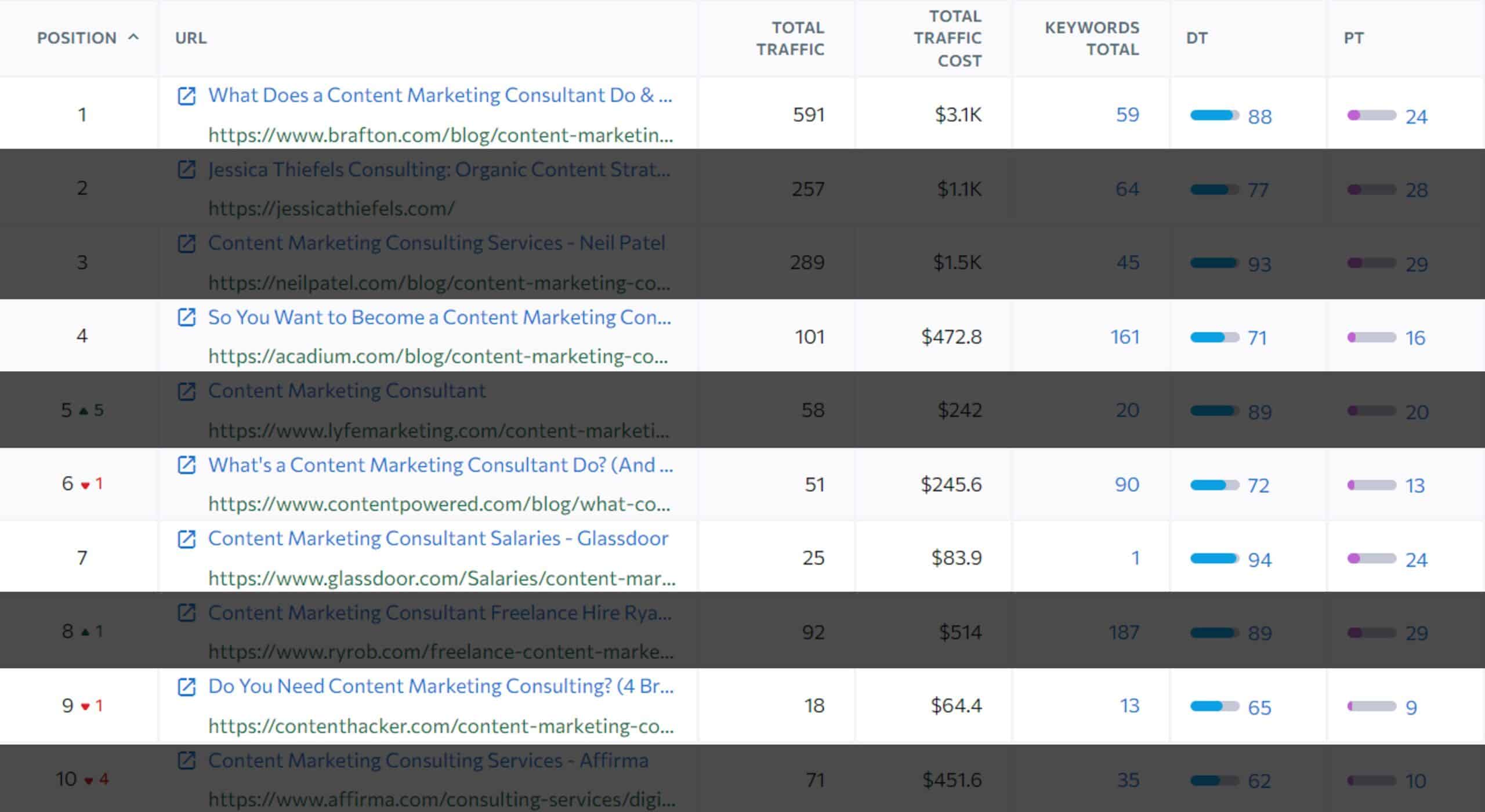
With all that, remember you want to cluster your keyword based on your topic clusters to ensure, you are having all search intent types of keywords within your topic cluster and then extend the topic cluster with relevant topics, entities, keywords, and terms and map the search intent for them too.
Then you must create the right type of content for each keyword, connect your content clusters with internal links to improve your semantic SEO and ultimately create your SEO funnel for every topic cluster.
Because by targeting all search intent keywords within your topic cluster and its relevant terms, is how you can create an SEO funnel for your website as you are having informational, commercial, and transactional pages that target every stage of the SEO marketing funnel for every step of the buyer journey.
Like this, it will allow you to:
- When somebody starts searching for informational keywords related to your industry, you can appear in SERPs.
- Once they start actively searching for relevant commercial keywords to your industry, you can appear in SERPs.
- And lastly once they’re ready to buy and start searching for transactional keywords to your industry you can appear in SERPs.
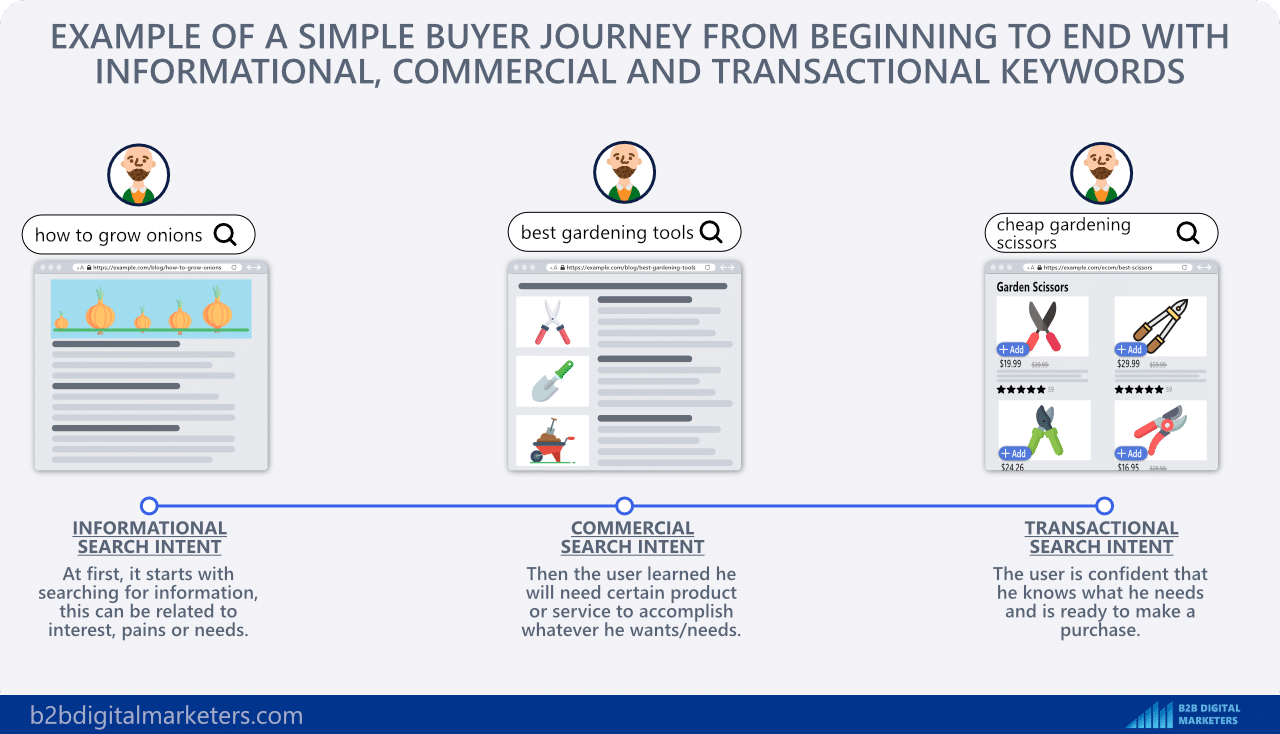
And like I said, the more previous touchpoints you have with a potential customer the bigger chance is that they will purchase from you.
Step #4: Increase Ranking
The next step of creating an EFFECTIVE SEO funnel for your website is to increase ranking for your important keywords, so you can actually rank in the top position.
Study shows like from Backlinko that if you don’t rank in the top 5 positions, you barely get any traffic.
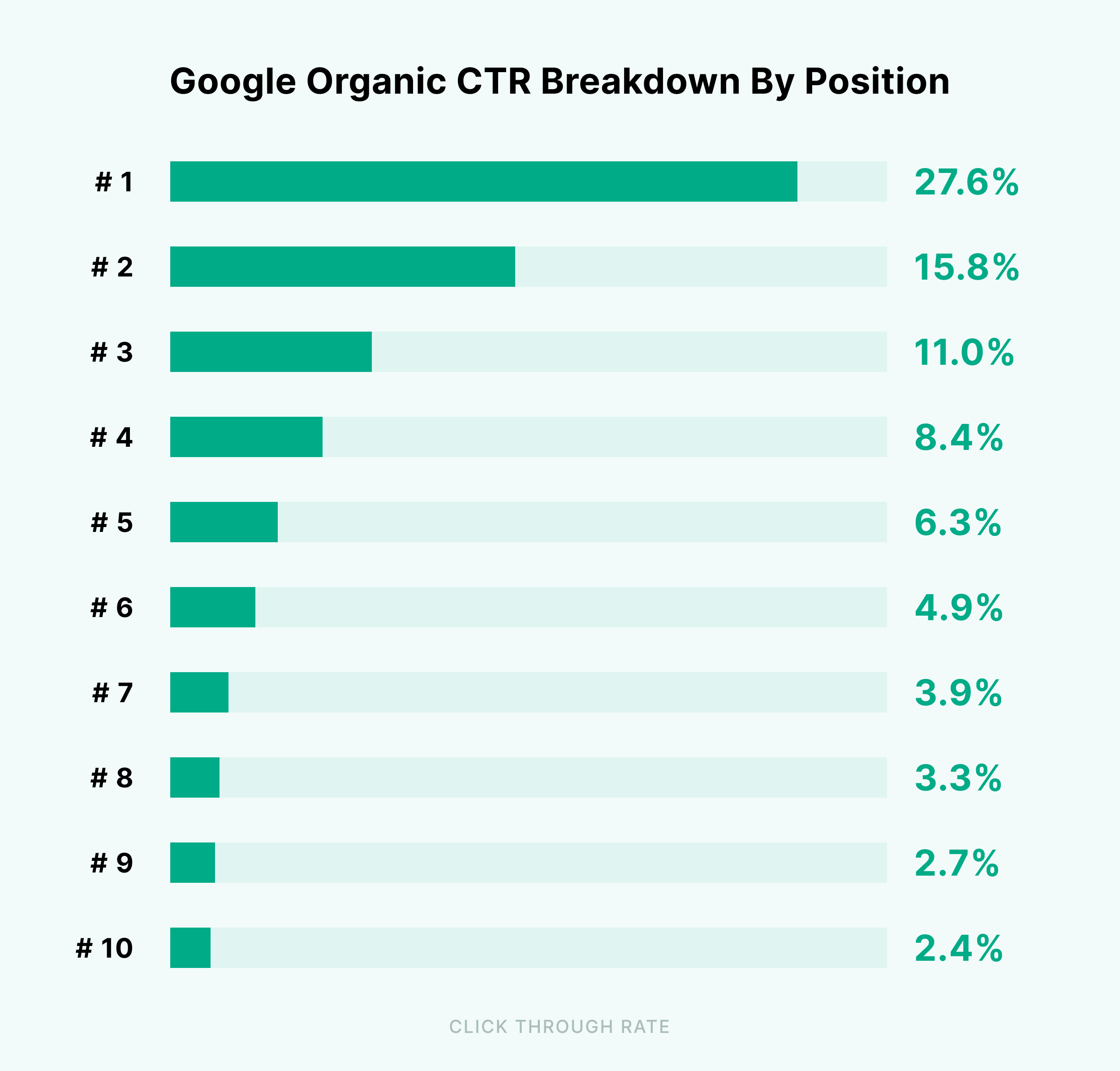
Therefore, it’s crucial to increase ranking for your topic cluster keywords to ensure, you are ranking in the top positions for all your keywords to create an effective SEO funnel.
To do that, first, must ensure you are implementing a proper internal linking strategy and connecting all relevant contents within your topic cluster as well as any other relevant resources and contents outside of your topic cluster on your website.

The reason for this is that internal links allow you to distribute your link juice across all your pages resulting in better ranking for all your pages including for your product and service pages. Plus it helps to strengthen the topic authority and relevancy for your website.

After that, you will want to build niche relevant backlinks and contextual backlinks mostly to your informational pages as commercial and transactional pages do not get naturally many high-quality backlinks to rank in the top position.
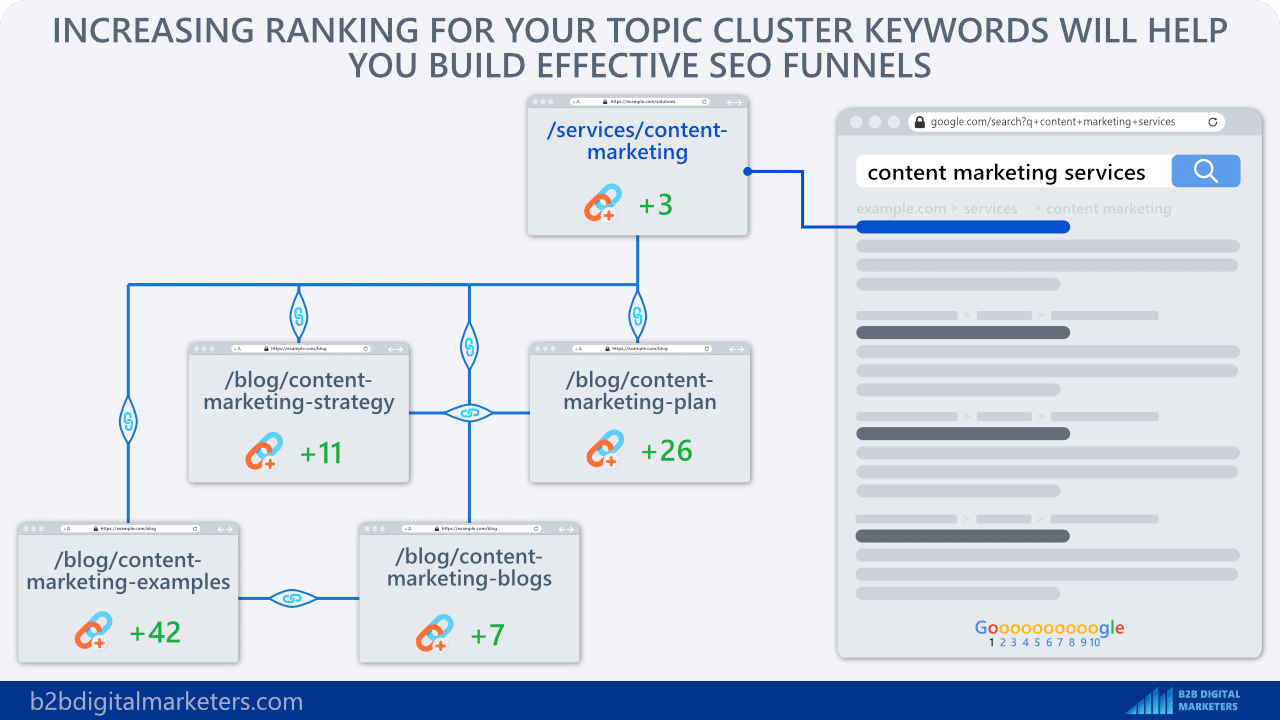
And of course, avoid any Google penalty.
Through this, you will be able to create strong topic authority and relevancy and rank for all your most important keywords to create an effective SEO funnel.

With that, there are many link building strategies you can use to increase your ranking, here is a list of my link building resources that will help you with that to do it the right way and not get penalized:
Step #5: Optimize for CRO
The next and more like an additional step to make effective SEO funnels is to optimize all your SEO content including informational, commercial, and transactional for CRO best practices.
Conversion Rate Optimization is arguably the best and easiest way to boost your lead generation and sales from your already existing marketing assets.
For example, BrookdaleLiving conducted an A/B test on its landing page to compare the conversion rate between a version with a video and a version with only a picture. The version with only a picture had a conversion rate of 3.92%, while the version with a video had a conversion rate of 0.85%. This resulted in a 360% increase in the conversion rate.
Or my client Adynamics altered their CTA (call-to-action) buttons by changing their color to a complementary shade of the heading. This resulted in a 190% increase in the conversion rate, going from 1.17% to 3.49%.
And there are tons of more examples of doing CRO for blog posts, landing pages, content offers, product pages, or category pages.
With that, here are some of the best CRO techniques that worked for me:
- Always run an A/B test for every change you are going to make.
- Play around with the CTA, more specific CTA often performs better than general ones like “click here”, and “learn more”.
- Never assume, always test. Do you feel like something will not work so you shouldn’t do it? Well, I thought adding more fields to the contact form is a bad idea. It turned out, it can improve the conversion rate.
- Design landing pages with high-converting templates. Unbounce or Instapages provide plenty of templates to design high-converting landing pages. Learn more on Leadpages alternatives or Unbounce alternatives.
- Use social proof above the fold.
These are just some CRO techniques that worked for me and my clients. However, I recommend you to CRO every piece of your content in your SEO funnel.
Step #6: Track, Measure & Improve
And the last step that you should perform is to track, measure and improve.
While it’s hard to measure exactly where the conversions are coming from, what were the previous steps of the buyer, and where they got to know your brand, it’s always good to track at least something than nothing.
For example, as your SEO content from your topic clusters starts ranking, you will notice, that there are a few pages, that do exceptionally well.
Why? Often, it’s hard to say.
But then you can take that type of content and recreate it for other of your topic clusters.
Therefore, tracking, and measuring your SEO performance is key to further maximizing your SEO efforts.
Final Advice to SEO Funnels
The buyer journey is complicated and as Gartner said, “The buying journey isn’t linear”.
This means it’s hard to identify exactly what keywords will do the best for your conversions and how exactly keywords affect your revenue.
However, by creating content across all stages of the marketing funnel, you create more “ways” for users to find you when they need you, be it at the beginning, middle, or end of the buyer journey.
And more ways mean more opportunities to increase your brand awareness, influence your potential customers towards your products or services, and ultimately increase your conversion rate, leads, and sales.
That’s why you want to create as much relevant content within and outside of your topic clusters.
BTW, expect that there will be way more informational keywords compared to commercial and transactional as it is like this in every industry.

SEO Funnels FAQs
SEO is a crucial component that spans the entire marketing funnel. At the Awareness stage, the goal is to increase visibility and drive traffic through search engines. During the Consideration stage, the focus shifts to optimizing for relevant keywords and creating content that answers the questions and concerns of potential customers.
In the Decision stage, conversion rate optimization (CRO) and local SEO tactics are employed to improve the user experience and increase the likelihood of a sale. Ongoing SEO efforts, such as technical optimization and content creation, help maintain and improve search engine rankings, ensuring the continued success of the marketing funnel.
Funnels in digital marketing are a visual representation of the customer journey from initial awareness to conversion. They depict the various stages a customer goes through as they move towards making a purchase or taking a desired action. Typically, the stages of a digital marketing funnel include Awareness, Consideration, and Decision.
By understanding the needs and motivations of customers at each stage, businesses can tailor their marketing efforts to effectively guide potential customers toward a conversion. Funnels in digital marketing can be used for a variety of purposes, including website optimization, email marketing, social media marketing, and more.
Related Articles:
Also, check out our SEO hub page to find all our SEO resources.
Disclaimer
This article was created by Eduard Dziak and may contain affiliate links. The following were used to optimize the article for the best user and search engine experience include:
- SE Ranking for keyword research and on-page SEO optimization
- Surfer SEO for SEO-friendly content creation for users and search engines.
- Jasper AI for grammar correction and information enhancement.
The article is based on the author’s own experience and knowledge, drawn from both their own work and that of their clients, to provide the latest, proven methods.



